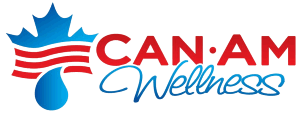Consumer Factsheet on: 1,2-DICHLOROETHYLENE
List of Contaminants
As part of the Drinking Water and Health pages, this fact sheet is part of a larger publication:
National Primary Drinking Water Regulations
This is a factsheet about a chemical that may be found in some public or private drinking water supplies. It may cause health problems if found in amounts greater than the health standard set by the United States Environmental Protection Agency (EPA).
What is 1,2-DCE and how is it used?
1,2-Dichloroethylene (1,2-DCE) is an odorless organic liquid that has two slightly different forms, a “cis” form and a “trans” form. Both the cis and trans forms – usually as a mixture – are used as a solvent for waxes and resins; in the extraction of rubber; as a refrigerant; in the manufacture of pharmaceuticals and artificial pearls; in the extraction of oils and fats from fish and meat; and in making other organics.
The list of trade names given below may help you find out whether you are using this chemical at home or work.
Trade Names and Synonyms:
1,2-DCE
Acetylene dichloride
Why is 1,2-DCE being Regulated?
In 1974, Congress passed the Safe Drinking Water Act. This law requires EPA to determine safe levels of chemicals in drinking water which do or may cause health problems. These non-enforceable levels, based solely on possible health risks and exposure, are called Maximum Contaminant Level Goals.
The MCLGs for 1,2-DCE have been set at 0.07 parts per million (ppm) for the cis form, and 0.1 ppm for the trans form. EPA believes this level of protection would not cause any of the potential health problems described below.
Based on this MCLG, EPA has set an enforceable standard called a Maximum Contaminant Level (MCL). MCLs are set as close to the MCLGs as possible, considering the ability of public water systems to detect and remove contaminants using suitable treatment technologies.
The MCLs have also been set at 0.07 ppm for the cis form, and 0.1 ppm for the trans form. EPA believes, given present technology and resources, this is the lowest level to which water systems can reasonably be required to remove this contaminant should it occur in drinking water.
These drinking water standards and the regulations for ensuring these standards are met, are called National Primary Drinking Water Regulations. All public water supplies must abide by these regulations.
What are the Health Effects?
Short-term: EPA has found cis- and trans-1,2-DCE to potentially cause the following health effects when people are exposed to it at levels above the MCL for relatively short periods of time: central nervous system depression.
Long-term: Both cis- and trans-1,2-DCE have the potential to cause liver, circulatory and nervous system damage from long-term exposure at levels above the MCL. The trans form is approximately twice as potent as the cis form in its ability to depress the central nervous system.
How much 1,2-DCE is produced and released to the environment?
Releases to the environment are expected to be limited to manufacturing plants in the Gulf Region of the United States. Since cis-and trans-1,2-DCE are not listed chemicals in the Toxics Release Inventory, data on releases during manufacture and handling are not available.
Trans-1,2-dichloroethylene may be released to the environment in air emissions and wastewater during its production and use as a solvent and extractant, in organic synthesis, and in the manufacture of perfumes, lacquers, and thermoplastics.
What happens to 1,2-DCE when it is released to the environment?
If 1,2-dichloroethylenes are released on soil, it should evaporate and leach into the groundwater where it will break down very slowly. If released to water, they will mainly evaporate. Neither of the two forms of this contaminant are likely to accumulate in aquatic life.
How will 1,2-DCE be Detected in and Removed from My Drinking Water?
The regulation for cis- and trans-1,2-DCE became effective in 1992. Between 1993 and 1995, EPA required your water supplier to collect water samples every 3 months for one year and analyze them to find out if cis- and trans-1,2-DCE is present above 0.5 ppb. If it is present above this level, the system must continue to monitor this contaminant.
If contaminant levels are found to be consistently above the MCL, your water supplier must take steps to reduce the amount of cis- and trans-1,2-DCE so that it is consistently below that level. The following treatment methods have been approved by EPA for removing cis- and trans-1,2-DCE: Granular activated charcoal in combination with Packed Tower Aeration.
How will I know if 1,2-DCE is in my drinking water?
If the levels of cis- and trans-1,2-DCE exceed their MCLs, the system must notify the public via newspapers, radio, TV and other means. Additional actions, such as providing alternative drinking water supplies, may be required to prevent serious risks to public health.
Drinking Water Standards:
Mclg: cis- 0.07 ppm; trans- 0.1 ppm
Mcl: cis- 0.07 ppm; trans- 0.1 ppm
Learn more about your drinking water!
EPA strongly encourages people to learn more about their drinking water, and to support local efforts to protect and upgrade the supply of safe drinking water. Your water bill or telephone books government listings are a good starting point.
Your local water supplier can give you a list of the chemicals they test for in your water, as well as how your water is treated.
Your state Department of Health/Environment is also a valuable source of information.
For help in locating these agencies or for information on drinking water in general, call: EPAs Safe Drinking Water Hotline: (800) 426-4791.
For additional information on the uses and releases of chemicals in your state, contact the: Community Right-to-Know Hotline: (800) 424-9346.
